1lumen selects and reviews products personally. We may earn affiliate commissions through our links, which help support our testing.
iTarlights WL30 review: LEP flashlight

iTarlights WL30 specifications
| Brand & Model | iTarlights WL30 |
|---|---|
| Flashlight category | Long-range thrower |
| LED | Shine through LEP |
| Max. output | 380 Lumens |
| Max. beam distance | 1495 meters |
| Max. beam intensity | >200,000 cd |
| Battery config. | 1*21700 |
| Onboard charging | USB type C |
| Modes | 3 |
| Blinkies | None |
| Waterproof | IP66 |
| Review publication date | October 2022 |
Introduction:
Here we go! Part two of the iTarlights LEP saga. To recap, a few weeks ago, I was asked to take a look at some new LEPs from a mysterious manufacturer, iTarlights. If you’ve never heard of them, that’s fine because I hadn’t either. They’re best known for making bicycle-mounted lights and tube lights. Also, like Sofirn, they’re an OEM and ODM manufacturer, meaning they make flashlights for other companies to their spec (think Foxconn/Apple), or just make rebranded versions of iTarlights own design. I reviewed the long-range iTarlights WL20, and now the smaller WL30 up for adjudication. Spec’d at 1,495 meters of throw and coming in about the same size as an M21A, it’s a compact-ish LEP with USB type C charging, side switch, and a pocket clip to boot. Price? Read on for that, but this is coming up against some stiff competition from Lumintop, Astrolux, Weltool, Fenix, and Nextorch.
Package quality.
The WL30 came in a very nice semi-rigid zippered case filled with microcell foam, whereas the WL30 came in an elegantly simple, sturdy, two-tone black/red gift box with a lift-off lid. No branding, no specs, nothing that screams “Hey! There’s an LEP in here!” Inside was a nice assortment of accessories.
- iTarlights WL30
- 5000 mAh 21700 button top 21700 li-ion battery
- Manual
- Lanyard
- USB type C charging cable
- Pocket clip
- Split ring
Like the WL20, the only thing missing from this is some o-rings, and I hope iTarlights is reading this and includes some since they’re wear items and will eventually wear out. Overall, it’s still a very complete kit and everything was really nicely packaged. The 21700 was sitting at 4.17 volts and that’s really high for storage, but good if you need full power out of the box.



Flashlight in use
The WL30 is purpose-built for long-range illumination. Period. It’s not really useful for anything else. If you need to light up a human-sized object at 1400 meters (provided you can see that far), this is the light for the job. The main benefit of an LEP flashlight over a comparable LED flashlight is the size. LEPs are a lot smaller for the same amount of throw.
The Nitecore MH40S for example needs a high-power LED and a 60+ mm head to reach 1500 meters whereas the WL30 needs a 36 mm head for the same distance. Handling-wise, the iTarlights WL30 handles like a 21700 size C8. It is forward-heavy and not the most natural pointer, but fits my hands great. It’s a bit heavy, and it has a lot of heatsinking and thermal mass. There’s some fine knurling combined with some horizontal grooves on the battery tube for gripping, and it’s pretty effective.
Switching is by means of a side e-switch which has aux LEDs under the rubber boot for on state and charging state. The switch is positioned for easy reach, and it has a nice feel with solid clicks. There’s a lanyard mounting point on the removable tailcap for threading the included lanyard, or mounting the split ring for the lanyard. The detachable pocket clip is cheap and doesn’t seem particularly well secured to the tube, but it held on.
No, this isn’t an EDC light. Tail standing? Yep. Anti-roll? Check. iTarlights didn’t include a holster with the WL30, and I think it really needs one since belt carry is one of the only other options.

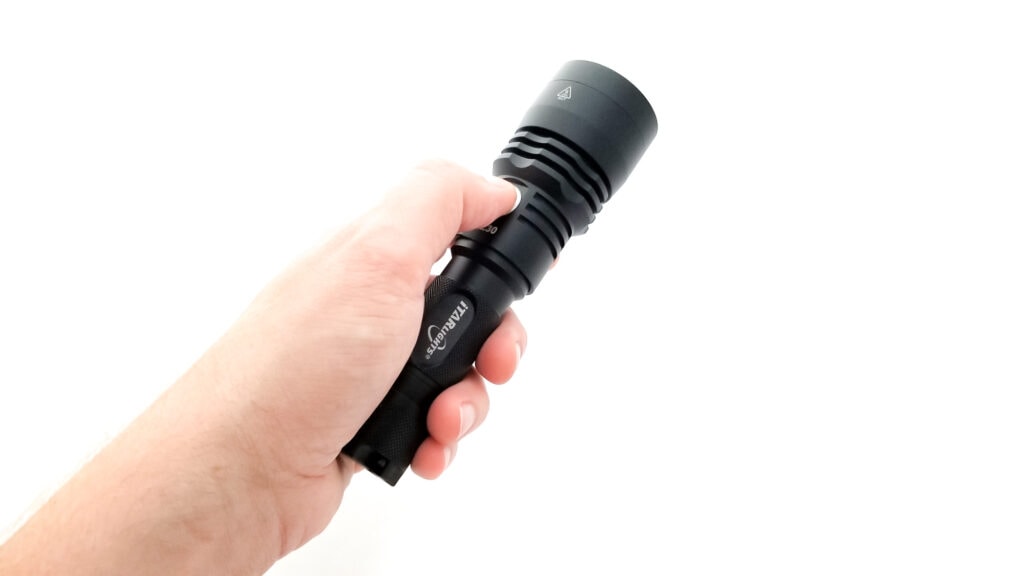
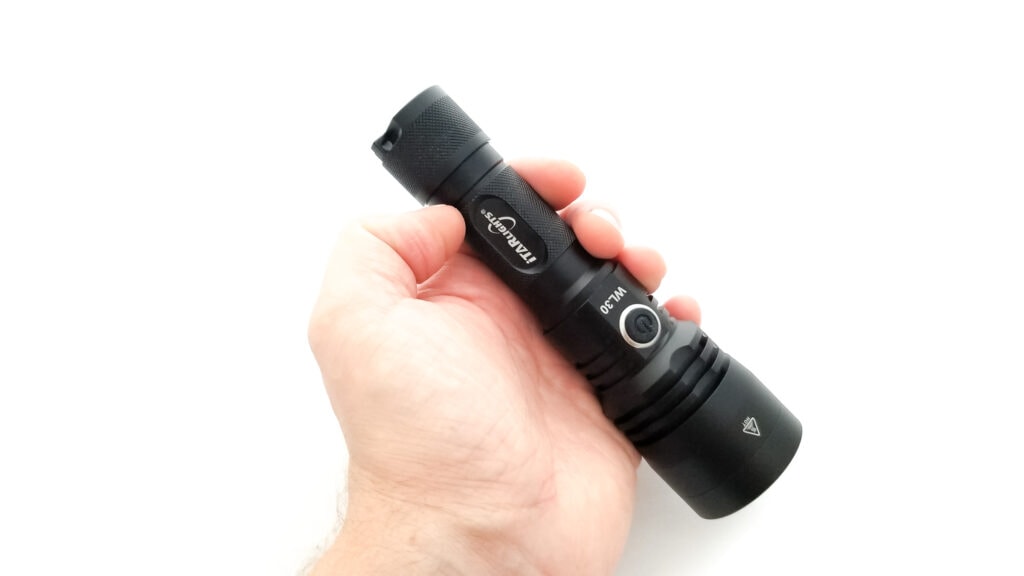
Build Quality, and Warranty
iTarlights is an unknown brand to 1Lumen, and I’ve never come across them in the wild, but after spending some time with the WL20, I’m sold. iTarlights are pretty nicely made, solid lights for a good price. It’s nothing special, but it is a step above the cheapest LEP out there Natfire SF2. The price, if purchased from Alibaba, is $149.99 US, and to me, that’s flying a bit too close to the sun for an affordable LEP. Read on for why.
There’s no major quality concerns. However, one glaring fault was the lenses. The outer lens was pretty dirty and I was able to clean it, but the inner lens was a mess of residues and crud. I recommend treading lightly here with cleaning and only use a cleaner and brush meant for camera lenses to avoid scratching it.
The light is made from an unknown aluminum, but it’s nicely machined, with no errant tool marks or blemishes. There’s no sharp edges either since it’s been given a carry melt treatment. The only abrupt edge is the lanyard mount on the tailcap. The finish isn’t specified either, but it looks like a type III HA and it’s a matte black that’s a little shiny, but not overly so. It’s nicely done as well, with no blemishes or thin areas. The silkscreen text looks good too with nice contrast. The threads are fully anodized triangular cut units that seem sturdy enough, but they were bone dry and made screeching noises when tightening or unscrewing the tailcap and tube segments. Lube those threads, folks!
The included battery fit very precisely in the tube, and didn’t rattle around at all. I couldn’t remove the battery tube itself, but the tailcap is sealed with a decent-size o-ring. The (tiny) USB charge port cover seals up nice, but it doesn’t seem particularly sturdy however, and I doubt it will hold up to prolonged abuse. iTarlights gives the WL30 an IP66 rating, so it’s good for heavy rain, puddle drops, etc. The tailcap has a loonnggg steel gold plated spring and the driver has a brass button for the positive contact. Not the greatest for a low-resistance current path, but this light doesn’t need one. No warranty information was included with the light, but over at iTarlights ecommerce site bikeflashlights.com, they mention a 2-year warranty. I presume it covers the usual pleasantries, DOA, workmanship issues, etc.
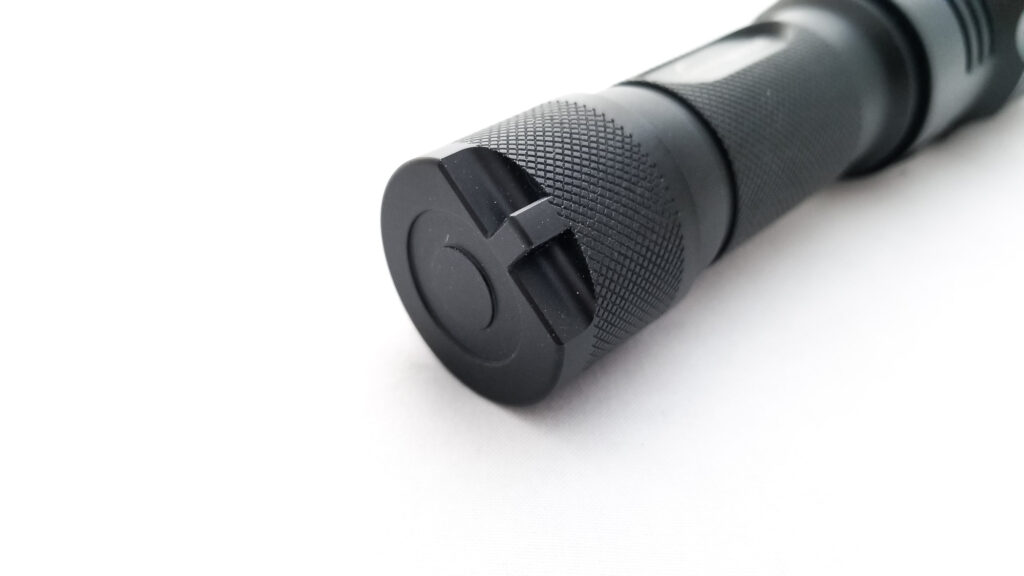
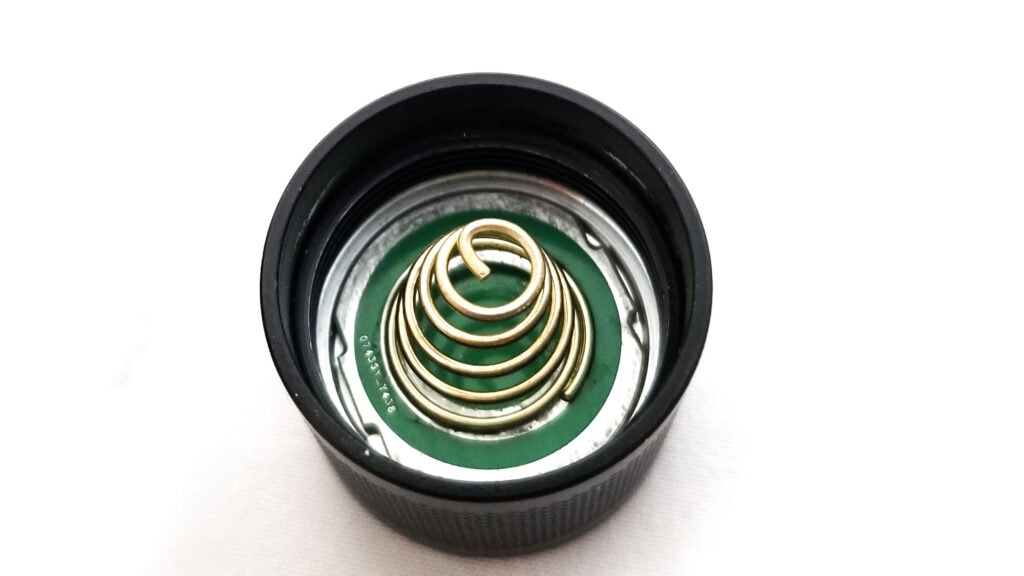
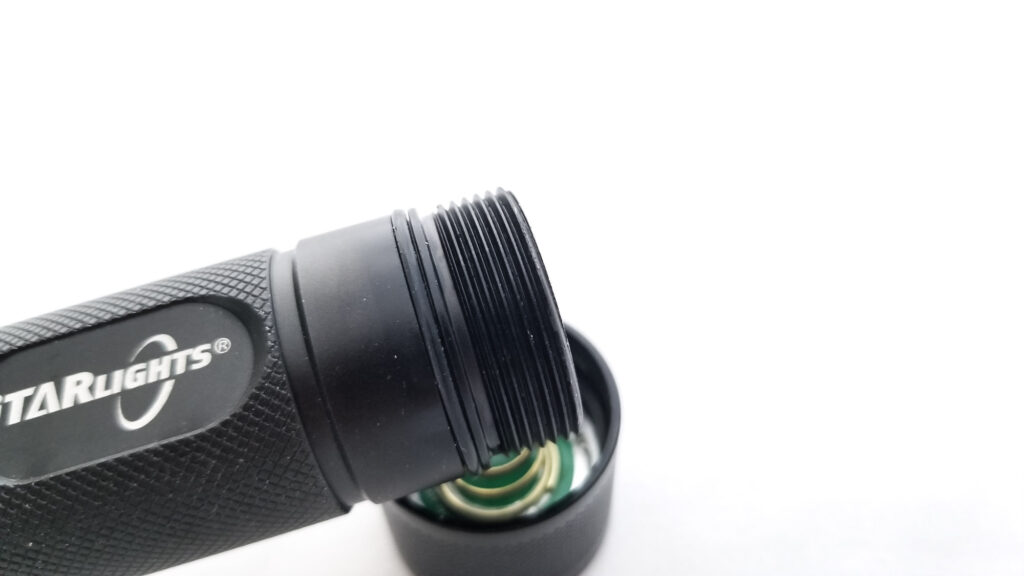
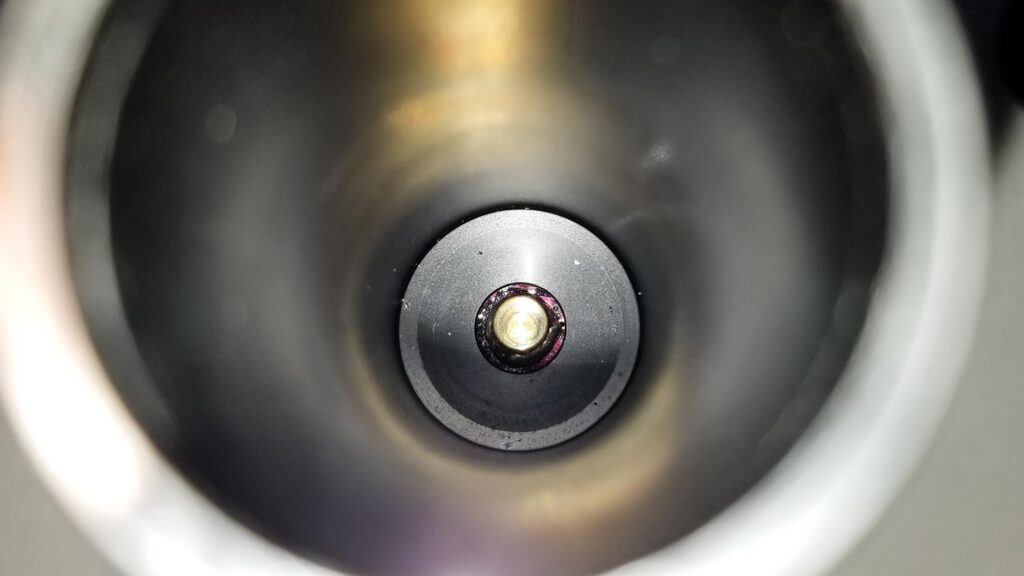
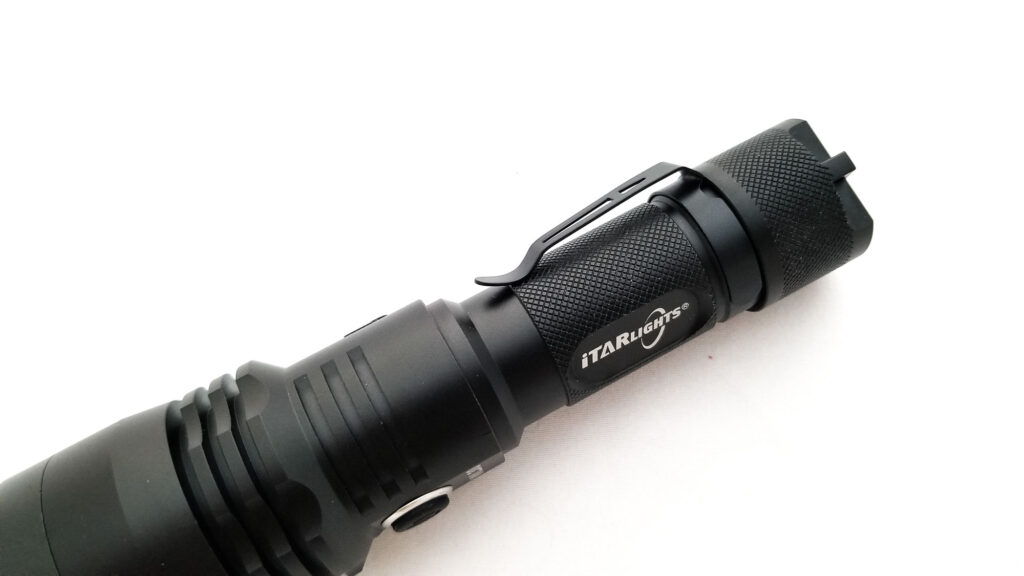
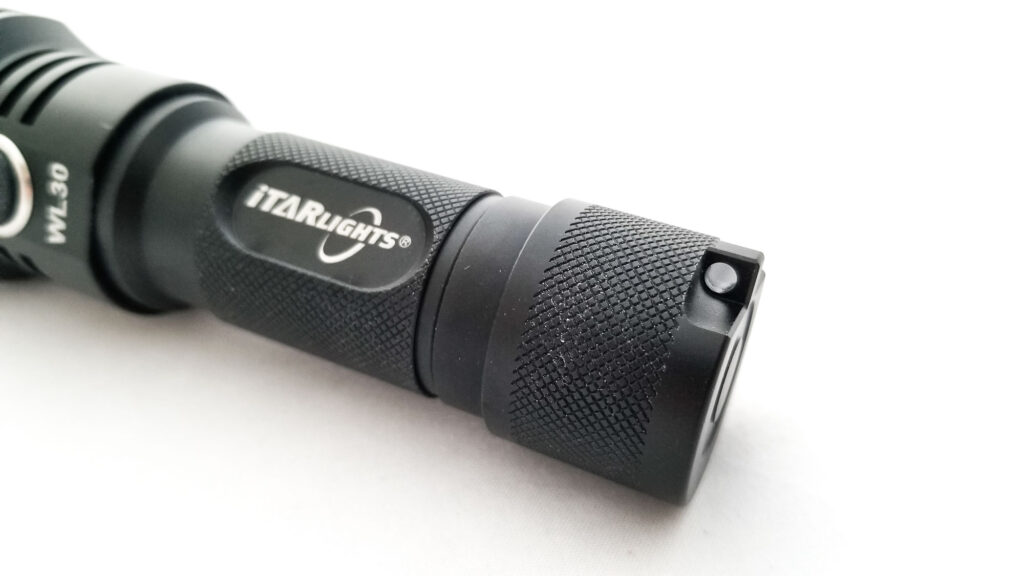
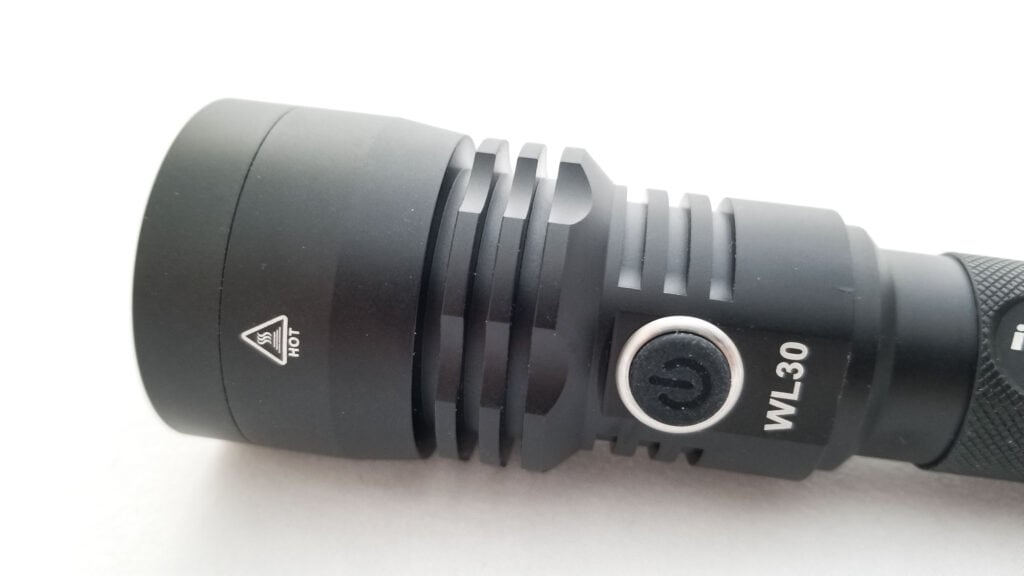
LEP, Lens, Bezel, Beam, and Reflector
The WL30 is an LEP thrower, not an LED. LEPs, also known as white laser flashlights, shine a pumped blue laser beam through (or off) some phosphor to change the laser beam color to a white-ish color, then directs the beam through aspheric lenses to focus it into a flashlight-like appearance (and increase the throw…a lot).
There are two types of LEP modules, the shine-through and mirror type. Shine through LEP modules (like the one on the Natfire SF2) are the latest technology and are generally cheaper to produce and don’t typically have the same performance as the mirror type modules, but do offer a more flashlight-like beam.
Mirror type modules have higher performance (the Maxtoch L2Kd, Maxtoch Owleyes W PRO, Weltool W4, and W4 Pro), but the beams tend to be more yellow than white/blue. With the bezel off, peaking through the lens it appears the WL30 is sporting a shine-through module.
One area costs are usually cut on LEPs is the optics, specifically plastic optics not protected by a lens, so I was glad to see the WL30 features a plastic (maybe polycarbonate) lens protecting the equally plastic aspheric lens. This is important since the aspheric lenses on LEPs are pretty specific and generally aren’t off-shelf parts if they break or get damaged. The aspheric lens also seems to be AR coated. The beam is typical LEP with no spill and all hotspot. There’s a bit of corona around the hotspot, and the overall tint is cool white, and it seems a bit cooler than the brighter WL20.
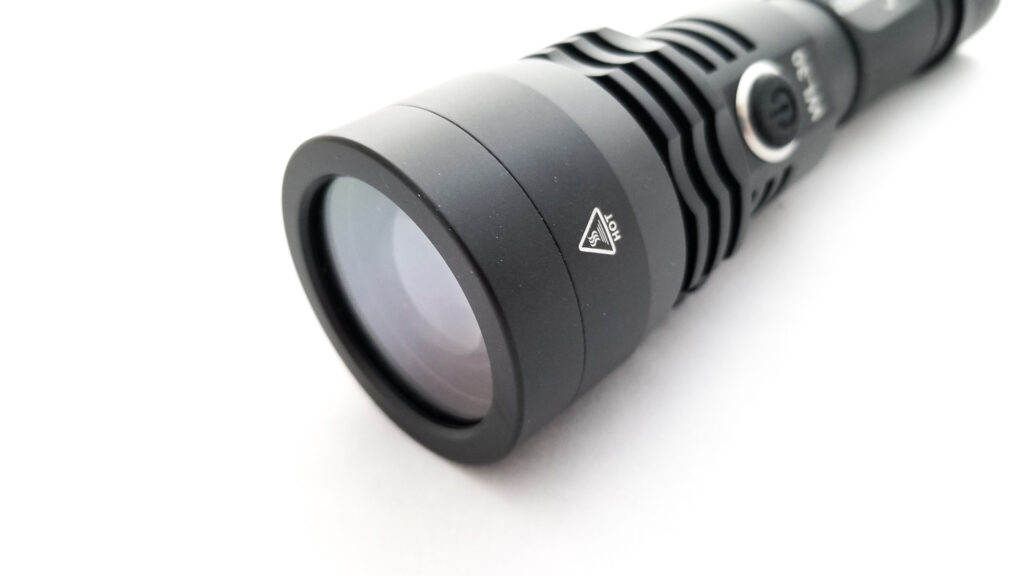
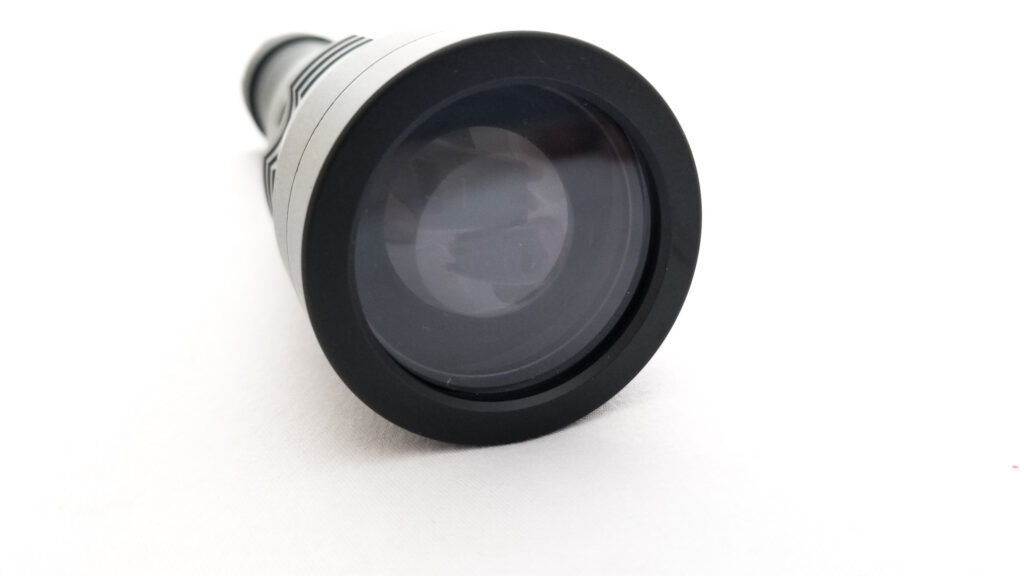
Dimensions and size comparison
Dimensions:
| Dimension | Millimeters | Inches |
|---|---|---|
| Length | 195 mm | 7.6 |
| Head diameter | 62 mm | 2.4 |
| Body diameter | 29 mm | 1.4 |
Weight:
| Weight | Grams | Oz. |
|---|---|---|
| Without battery | 391 | 14 |
| With included 21700 | 429 | 15.1 |
Flashlight size comparison with its competition
Group 1 left to right: Acebeam L19 v2, iTarlights WL30, Speras T3R, Convoy L21B, Acebeam L19
Group 2 left to right: Natfire SF2, iTarlights WL30, Thorfire C8, Acebeam L18
Group 3 left to right: iTarlights WL20 with short tube, iTarlights WL30, Natfire SF2
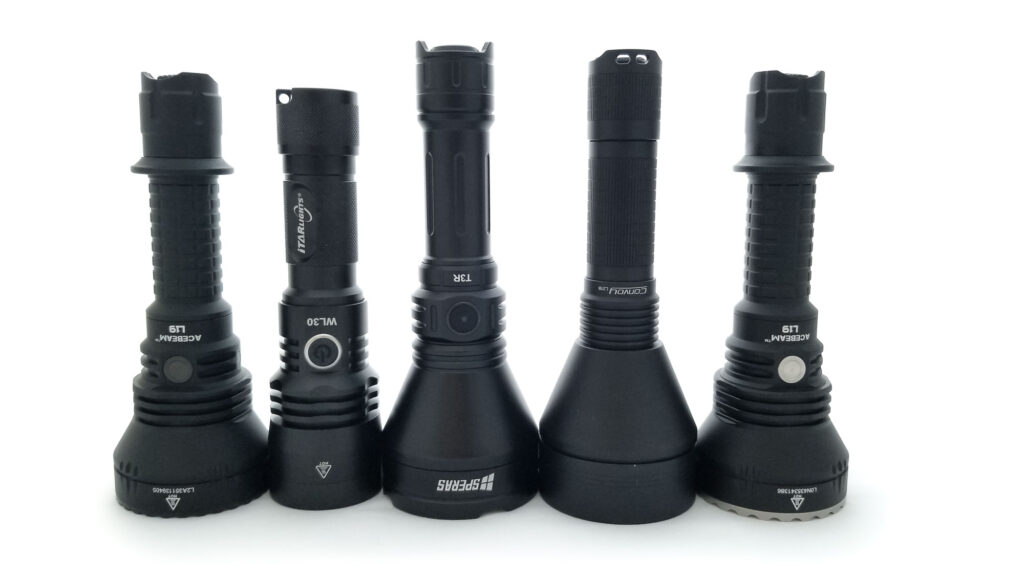
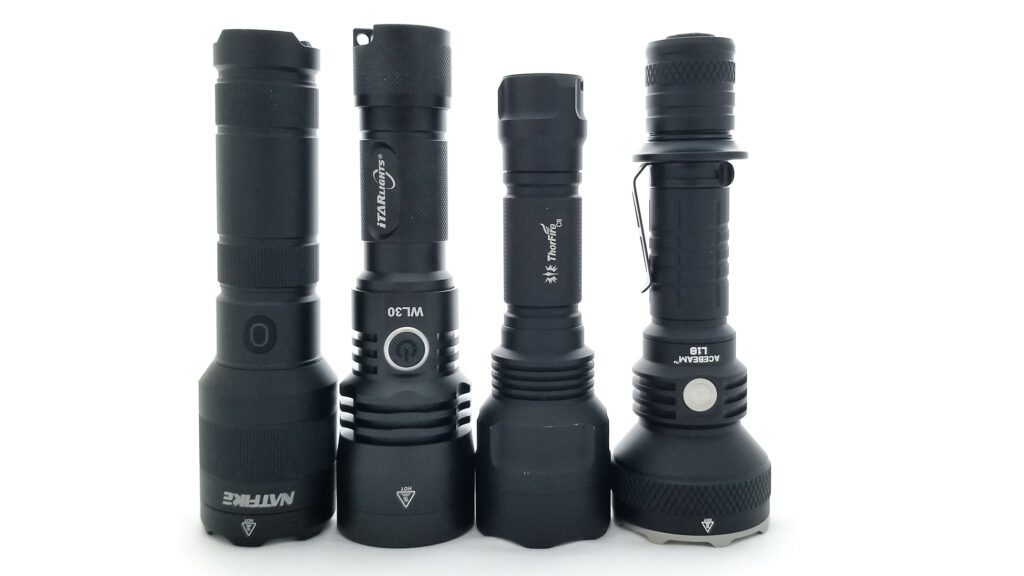
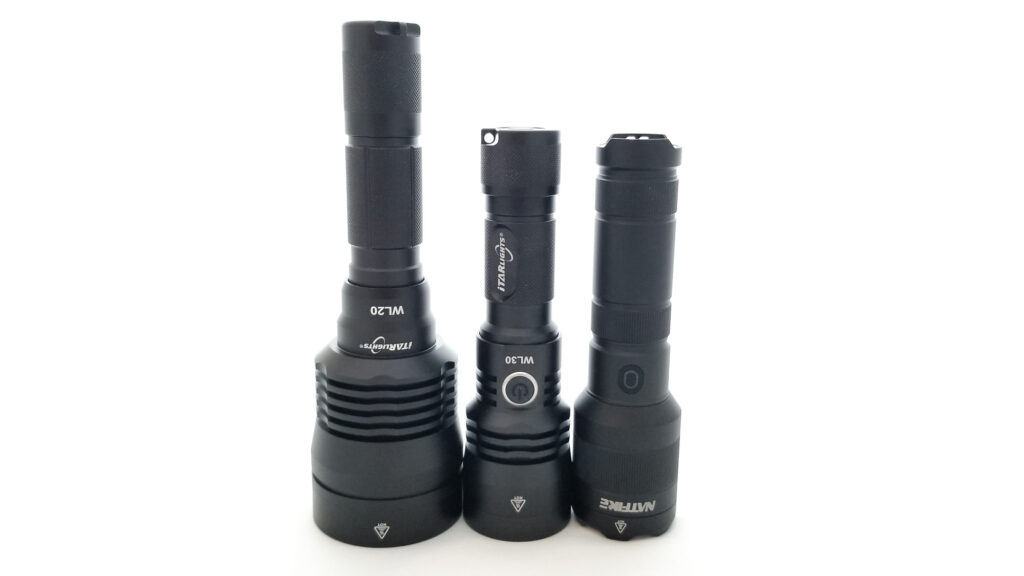
Driver & User Interface:
No driver is specified in the literature, so I can’t say for sure, but I’m guessing it’s a constant current buck driver of some kind. The runtimes will tell.
The UI is delightfully simple, and that’s a great thing since LEPs don’t need complicated UIs. Folks, Anduril is for EDC lights, not LEPs.
Available modes: High, Medium, Low
Available blinky modes: Strobe
User interface:
From OFF:
- Single click: Turns on in High mode
- Double click: Strobe
From ON:
- Click and hold for 2 seconds: Turns off
- Single click: Switches modes H-M-L
- Double click: Strobe
Mode memory:
- None
Shortcuts:
- Double click for Strobe
Low voltage warning:
- The switch LEDs show the battery state. Green for okay, red for low.
Strobe/blinkies
- Strobe
Lock-out mode:
- None, but it can be manually locked out by unscrewing the tailcap ⅛ turn
PWM
- None
Additional info on the UI:
- The UI is again, very simple, and that’s just fine for an LEP with a special use-case. The light always starts in High mode (which is fine for an LEP), and there’s no mode memory either, which can be good or bad for some, but again, for an LEP it’s less important. The mode spacing is nice, and there’s no PWM. A strobe mode is also fine here since it can be a signaling tool, and getting out of strobe takes a single click (back to High mode). No mention is made of thermal regulation, but we will see if it’s present in the runtimes. I suspect not, since the light has a lot of heatsinking and is only being driven to about 13 watts.
Batteries & Charging
The WL30 runs on a single 21700 battery, and my kit came with a very blue, button top unbranded 5000 mAh 21700. iTarlights claims this is a Panasonic battery (maybe a ‘Tesla’ cell), but without getting it buck naked, I can’t say for sure. I put it on my VapCell S4+ and get around 15 milliohms. The good news is it’s not proprietary, so you can swap in any 21700 so long as it fits, and the long spring in the tail gives some flexibility with that. I tried some Samsung 50G button top and it fit. I borrowed a protected, USB rechargeable 21700 from the WL20, and it fit also.
The onboard USB type C charging works fine, and it’s not rated in the manual, but on a USB type A to C cable I got around 5 volts 2 amps, and on C to C a little over 2 amps at 5 volts. This is pretty good and charges the battery in about 3.5 hours. The termination voltage was 4.17 volts.
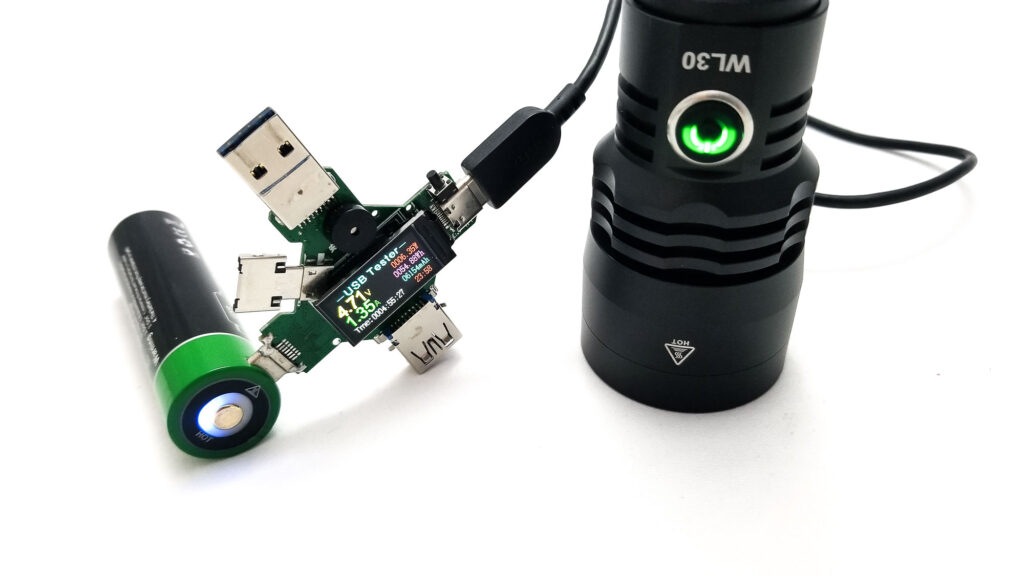
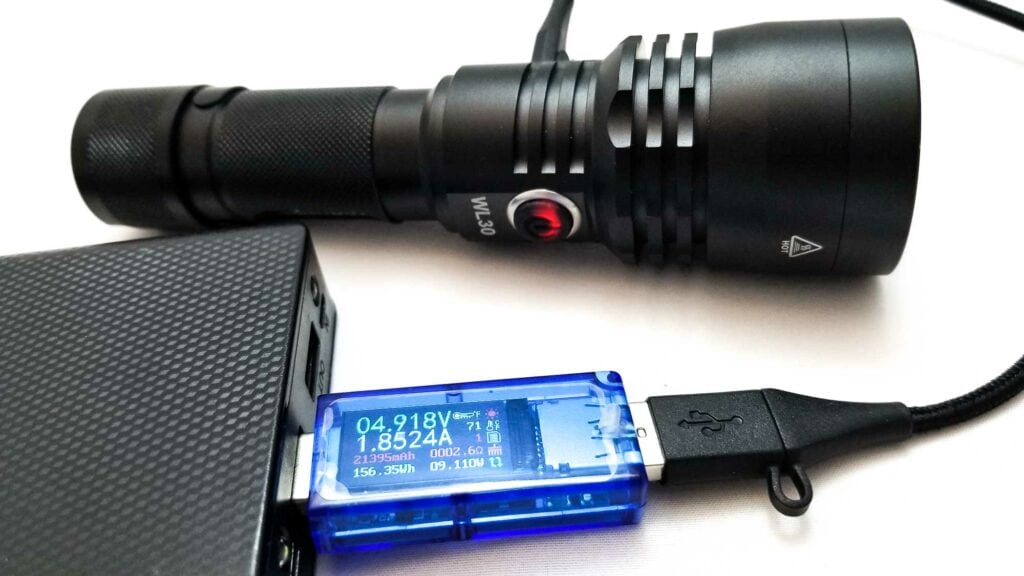
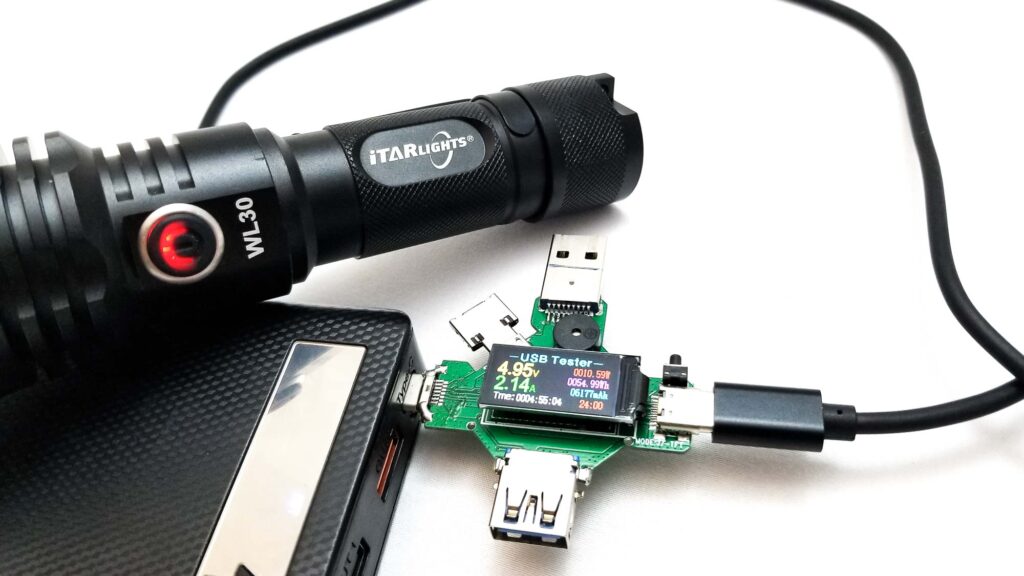
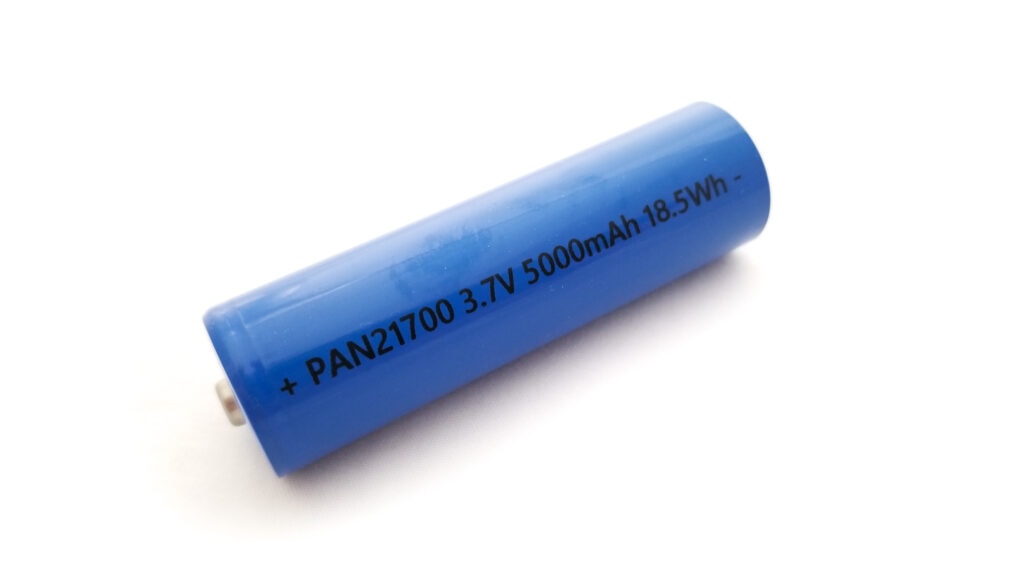
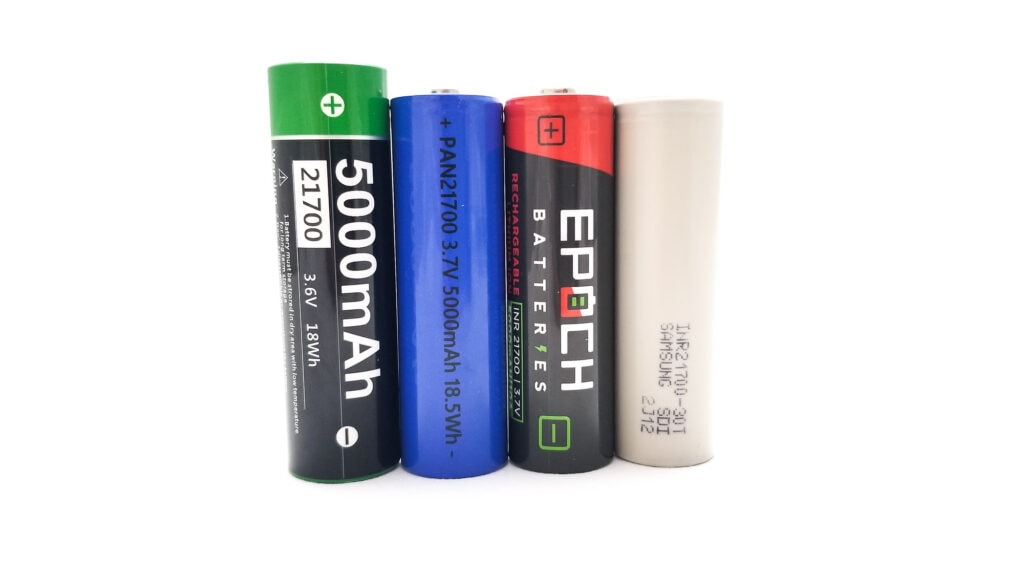
Performance test
Lumen measurements
Lumens are measured using my home made 50 cm integrating sphere, and I use a Digi-Sense 20250-00 datalogging luxmeter. The sphere has been calibrated using a Convoy S2+ calibrated to 260 Lumens and is accurate within 10% of actual output. All measurements taken at 30 seconds. Amps were measured using the two 5000 mAh batteries charged to 4.19 volts. Current measurements taken with my Thsinde 18B+ multimeter with 14 gauge wires in the meter and higher currents with my FY219 clamp meter and a loop of 12 gauge wire.
| Mode | Amps at start | Specs | turn on | 30 sec | 10 minutes |
|---|---|---|---|---|---|
| Low | 780 mA | 84 | 77.9 lm | 76.8 lm | 74.5 lm |
| Medium | 1.24 A | 168 | 129 lm | 128 lm | 121 lm |
| High | 2.56 A | 380 | 245 lm | 241 lm | 220 lm |
Parasitic drain:
- 0.30 mA
This is a buck driver, so the figure shown here is the input current to the battery, not the actual current to the LED, which may be higher.
Battery Life: Runtime graphs
Runtimes are measured using my home made 50 cm integrating sphere, and I use a Digi-Sense 20250-00 datalogging luxmeter. I used the included fully charged 5000 mAh 21700 for each test. I tested Low, Medium and High modes.
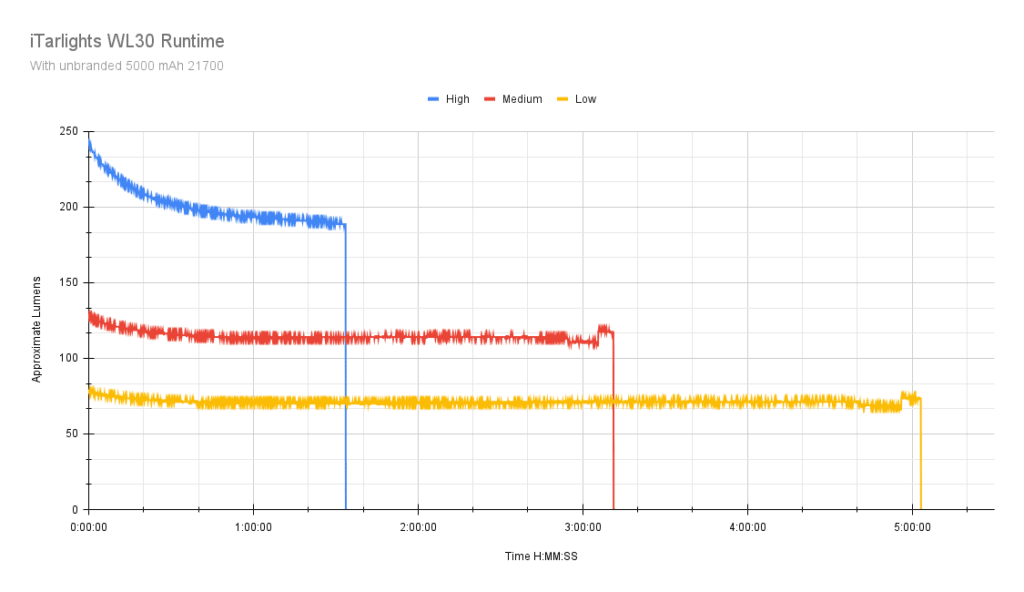
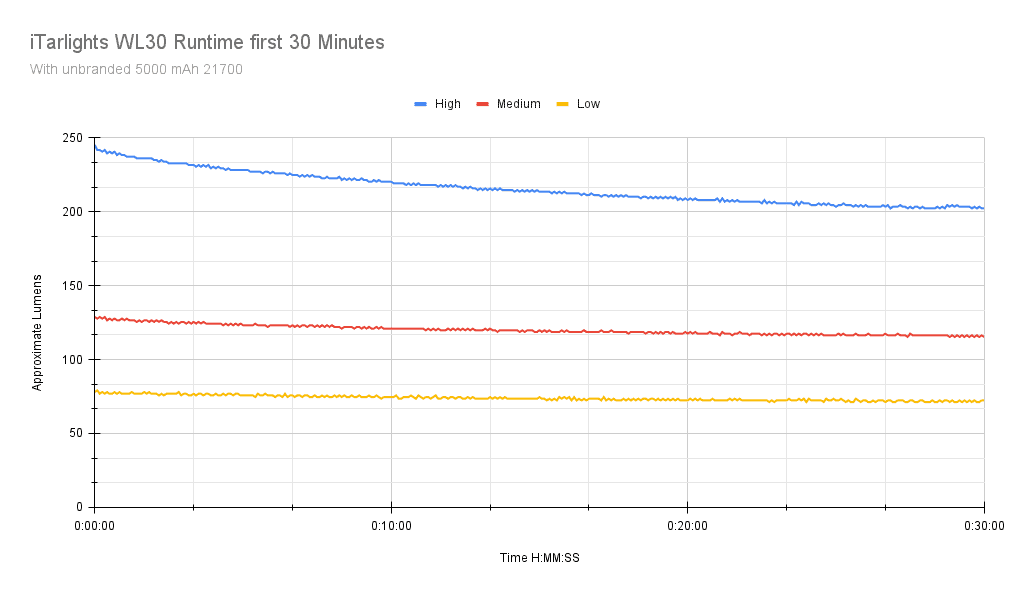
| Mode | Specified | Measured runtime (ANSI) | Time till shut off |
|---|---|---|---|
| Low | 8h | 5h 3min | 5h 3min |
| Medium | 3h | 3h 11min | 3h 11min |
| High | 1.5h | 1h 33min | 1h 33min |
Low mode was the surprise, coming in a few hours under the spec when the others were on point. The battery was fully charged for the test, and I ran the test twice just to verify the results and took the higher of the two tests (the second test was under 5 hours). Maybe the battery is underperforming or the driver isn’t particularly well-regulated for low output. The graphs are pretty noisy and I think it’s due to the EM interference coming off the driver inductor.
On Low mode, it makes a defined, but faint high frequency whine. Unfortunately, this is a sign of a less-than well-designed driver. Temperatures are held in check, and stayed under 60 C for High, and around 40 C max for Low and Medium. The light was usable after each test in Low mode and limited use in High after the Medium and Low runtimes. The battery discharged to 3.1 volts after each test. There wasn’t any LVP notification, other than the blinking red switch LED, and the shutdown was abrupt.
ANSI FL1 standards: The runtime is measured until the light drops to 10% of its initial output (30 seconds after turning on). This does not mean that the flashlight is not usable anymore. The last column shows how long the light actually works till it shuts off. If there is a + symbol, it means that the test was stopped at that particular point, but the light was actually still running. This happens on certain occasions, with certain drivers, firmware, or batteries.
Peak beam intensity and beam distance measurements
Beam intensity and throw was measured outdoors at 10 meters using a Uni-T UT383S luxmeter. I used the included 5000 mAh 21700, fully charged for the test. Readings taken at 30 seconds.
| Mode | Specified | Candela measured | Meters | Yards |
|---|---|---|---|---|
| Low | >40,000 cd | 185,900 | 862 | 943 |
| Medium | >100,000 cd | 423,100 | 1,301 | 1,423 |
| High | >200,000 cd | 502,900 cd | 1,418 | 1,620 |
iTarlights is vague about the throw figures, but these numbers are pretty good. Note the ultra-cheap Natfire SF2 beats the WL30 on High mode, but this is still good performance.
Extra info: Peak beam distance according to ANSI FL1 standards: The calculated value of distance in meters at which the flashlight produces a light intensity of 0.25 lux. (0.25 lux is about the brightness of a full moon shining on an object).
Beamshots
I compared the iTarlights WL30 to some other long range LED flashlights and two LEPs. Photos taken with my Samsung Note 8 set to 0.5s ISO 400 and 5000K WB. The tower is 950 meters away.
Beamshots of the following flashlights compared:
- iTarlights WL30 LEP
- Natfire SF2 LEP
- Nitecore MH40S
- Convoy L21B
- Acebeam L19 v1
- WildTrail WT90
- Speras T3R
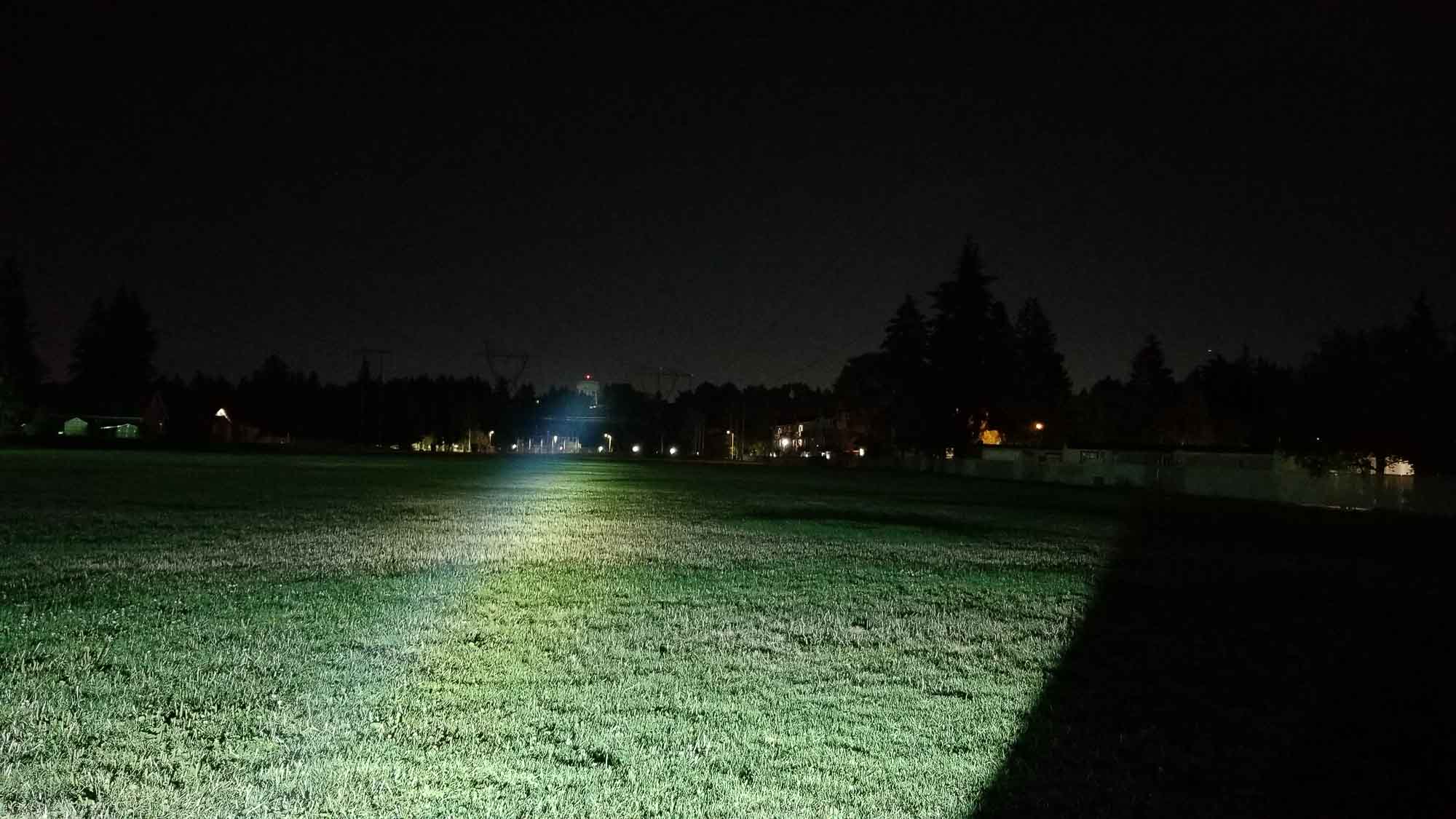
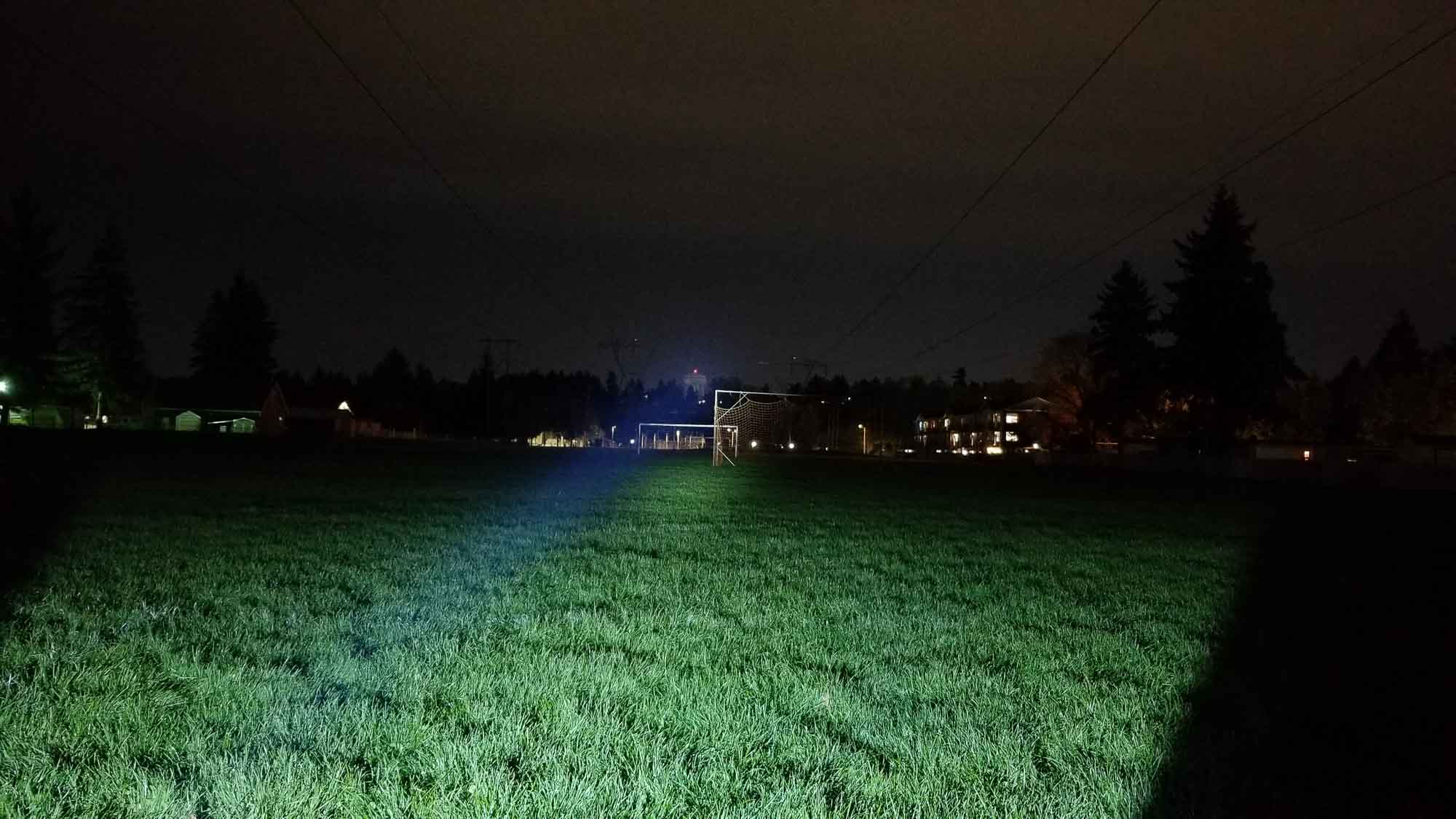
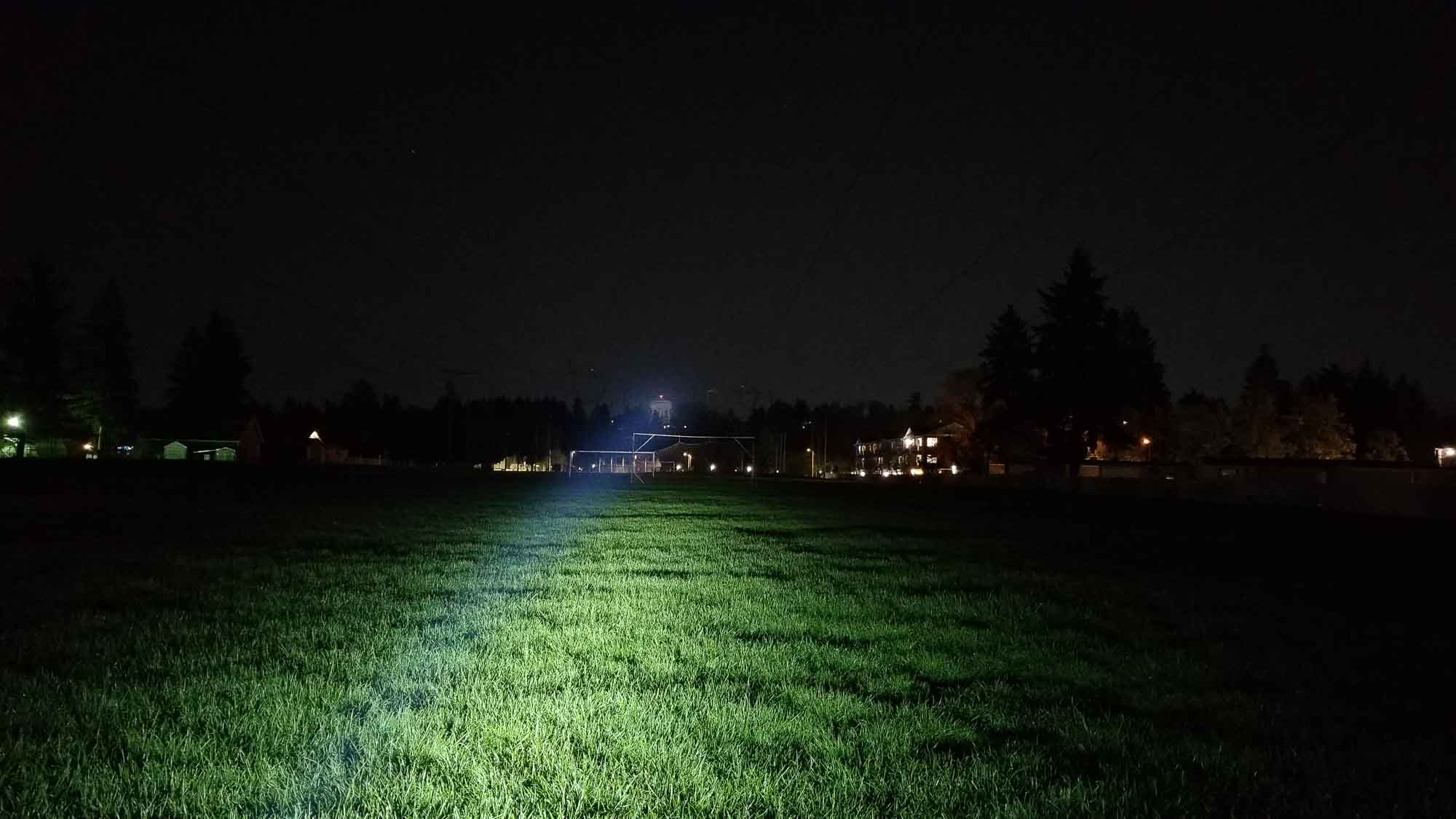
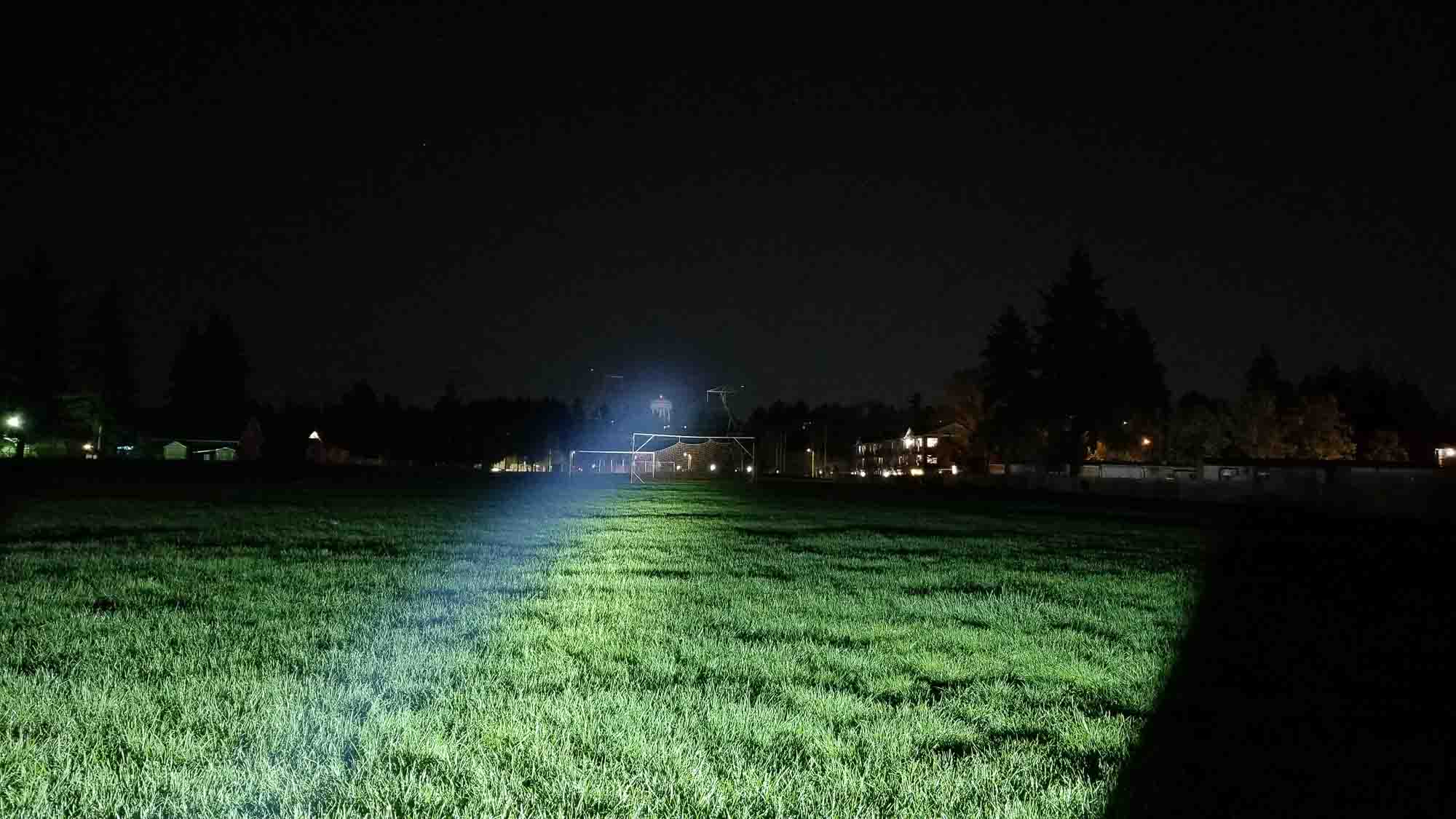
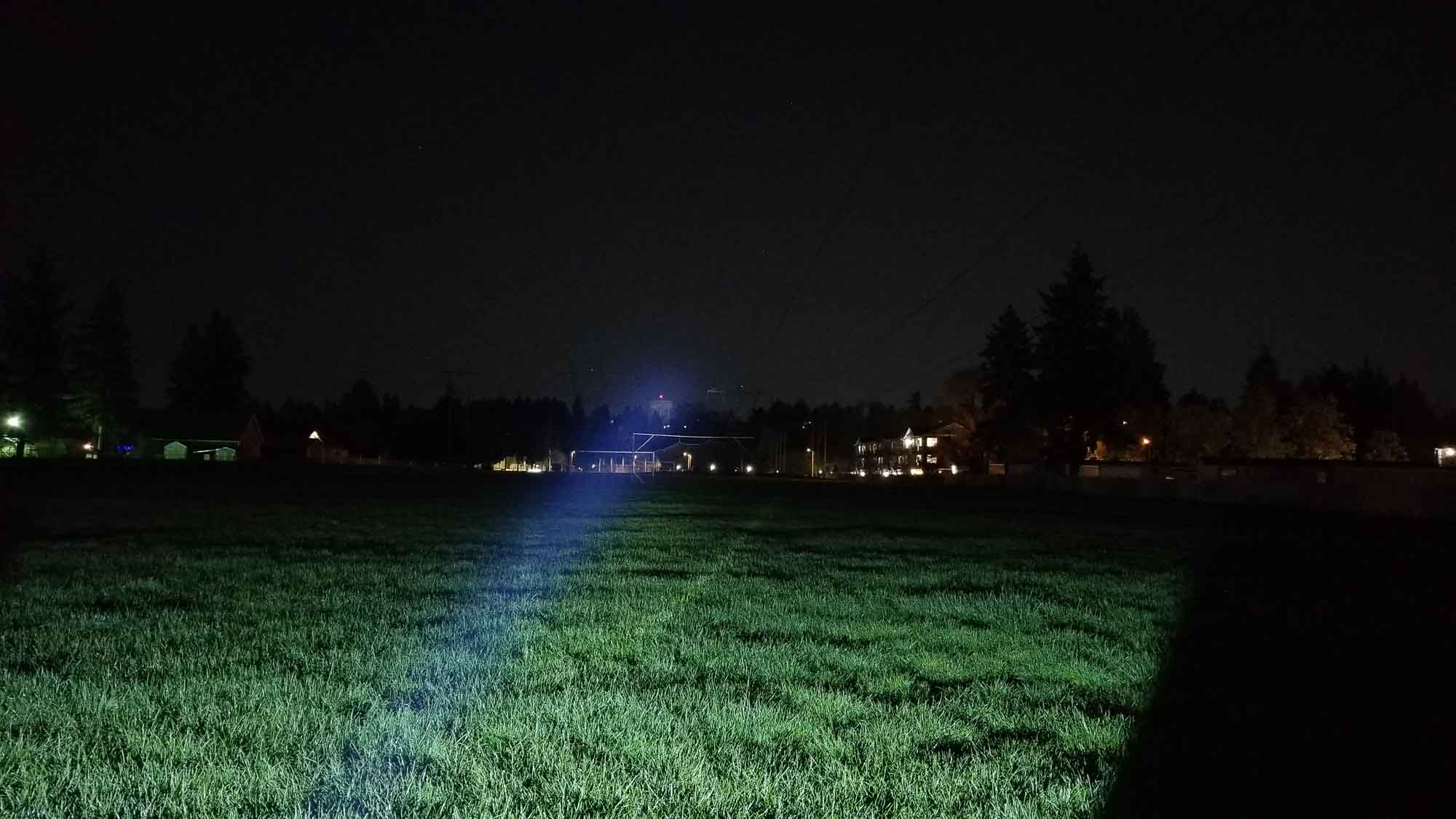
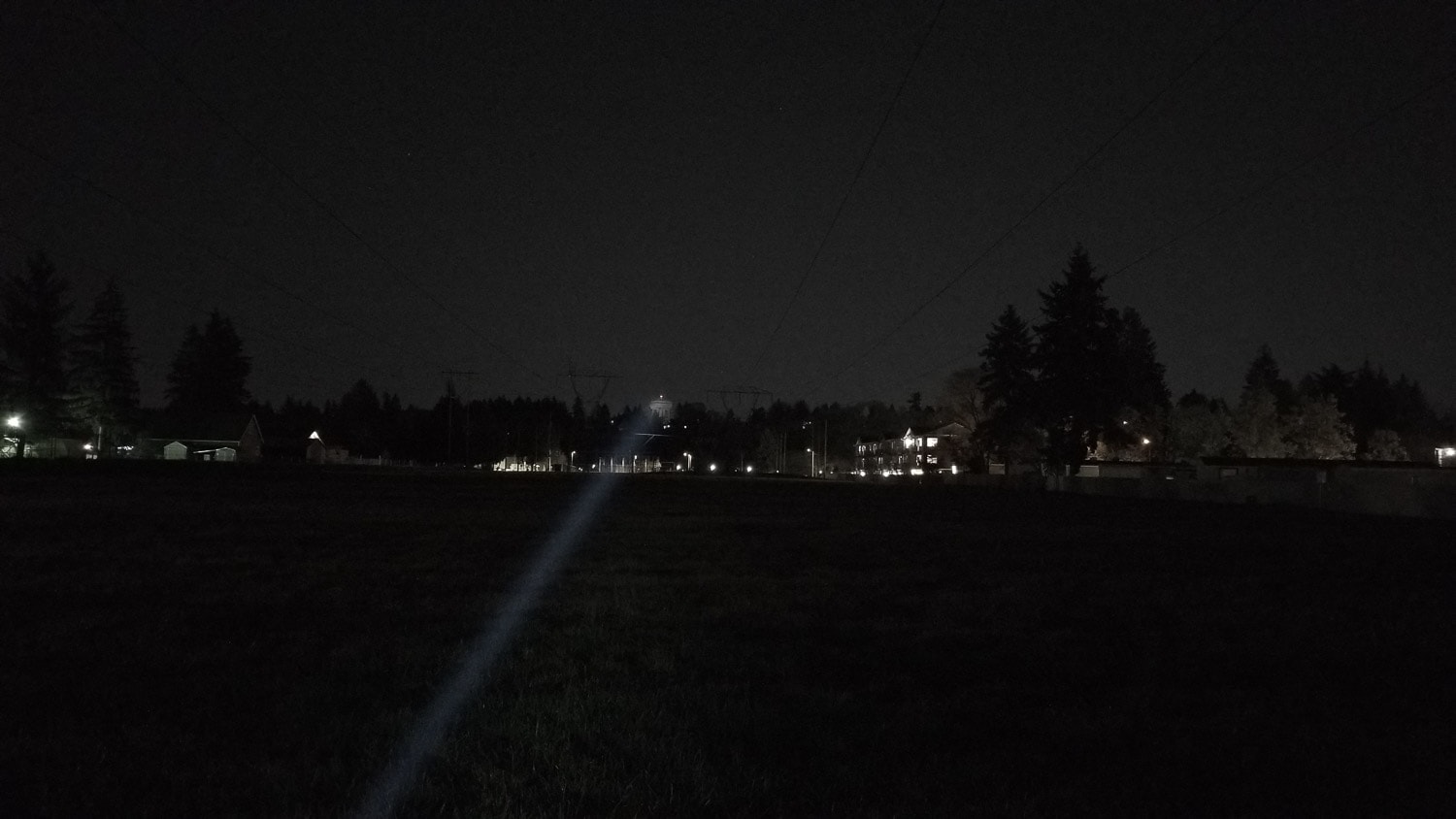
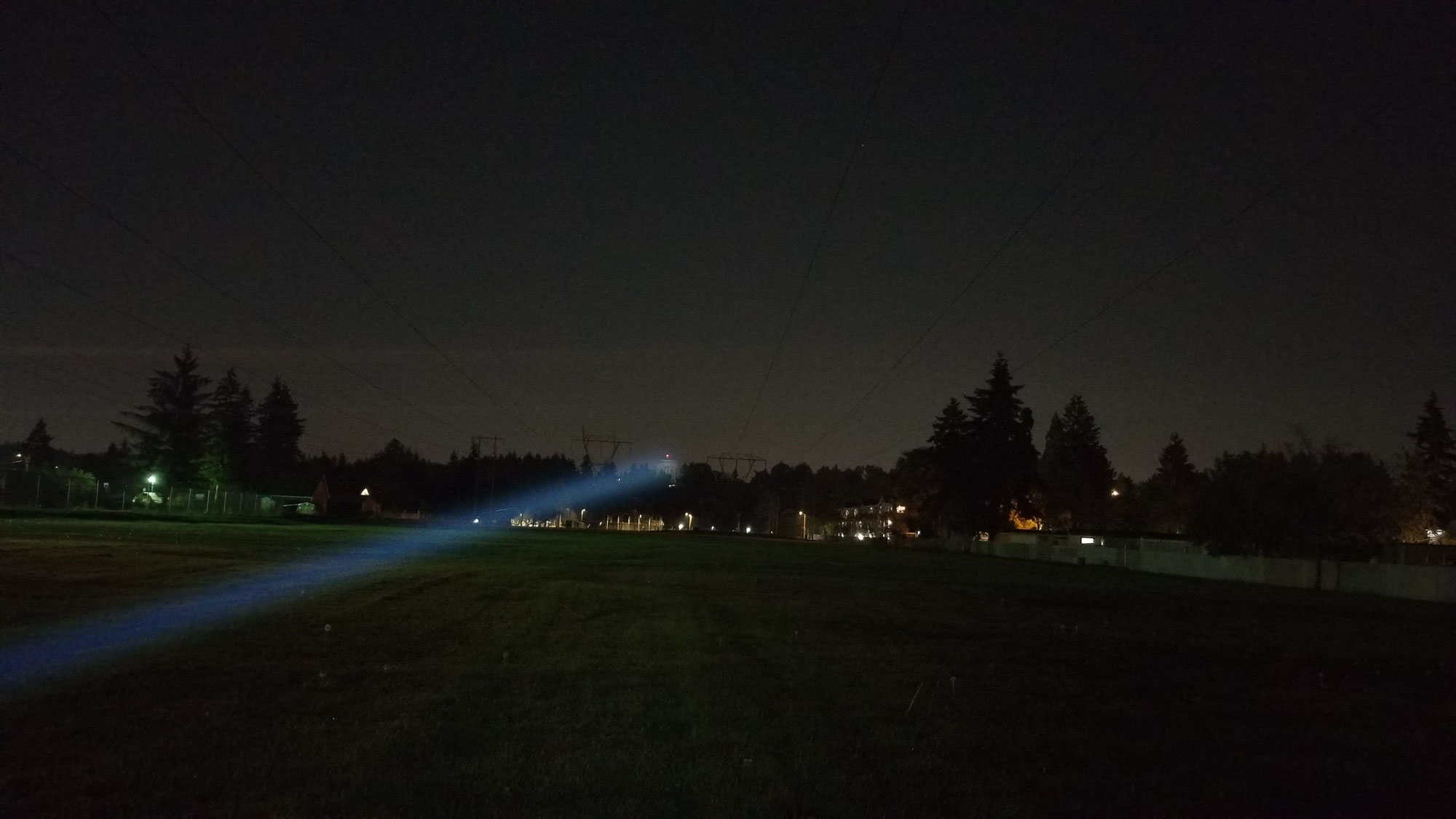
Disclaimer: This flashlight was sent to me for review at no cost by iTarlights. I have not been paid to review, nor have I been holding back on problems or defects.
Final Verdict
Pros
- Affordable
- Decent build quality
- Onboard 2A charging (works with C to C)
- Includes battery and accessories
- Simple UI
- Protective outer lens
Cons
- Dirty lenses!
- Under-performing Low mode runtime
Explanation on star ratings:
1: Avoid: a match would be a better choice – 2: Poor: significant defect or issues; almost unusable – 3: Average: some defects or issues; but still usable 4: Good: recommended (minor issues) – 5: Great: highly recommended

4 stars: ★★★★
Just when I thought the LEP world had reached an impasse with low-priced LEPs, iTarlights showed up with the WL30. Although the WL30 isn’t revolutionary and doesn’t have stand-out features, it represents a step in the right direction namely, it removes a barrier to owning an LEP: Cost. The long ranger low-cost LEP Natfire SF2 proved you can build a decent LEP for under $100. Has this trend continued with the WL30? Not really. At $150 US, it’s more expensive than the Natfire, Lumintop Thor I, and encroaching on the better-performing Nealsgadget LEP ($165 US).
What do I like? The UI is simple and straightforward (for an LEP), the onboard charging is a nice addition, and the fact it includes a decent, non proprietary (and removable) battery is also nice. I liked the addition of the protective outer lens, something the Natfire didn’t have. The buck driver is also nice for regulated output, although it’s a bit noisy. We all know low-cost means compromises have to be made, and there’s evidence in the WL30.
The dirty lenses were an issue, and although they can be removed and the inner lens can be cleaned (be careful, plastic scratches), you shouldn’t have to do that. The threads weren’t the smoothest either. The Low runtime is coming in way under spec as well, which was odd since the Medium and High runtimes were spot-on. All that aside, for what it is, the WL30 is a 4 star light and doesn’t represent a leap forward in any particular feature set (or cost-savings).
iTarlights WL30 for sale
1lumen selects and reviews products personally. We may earn affiliate commissions through our links, which help support our testing.